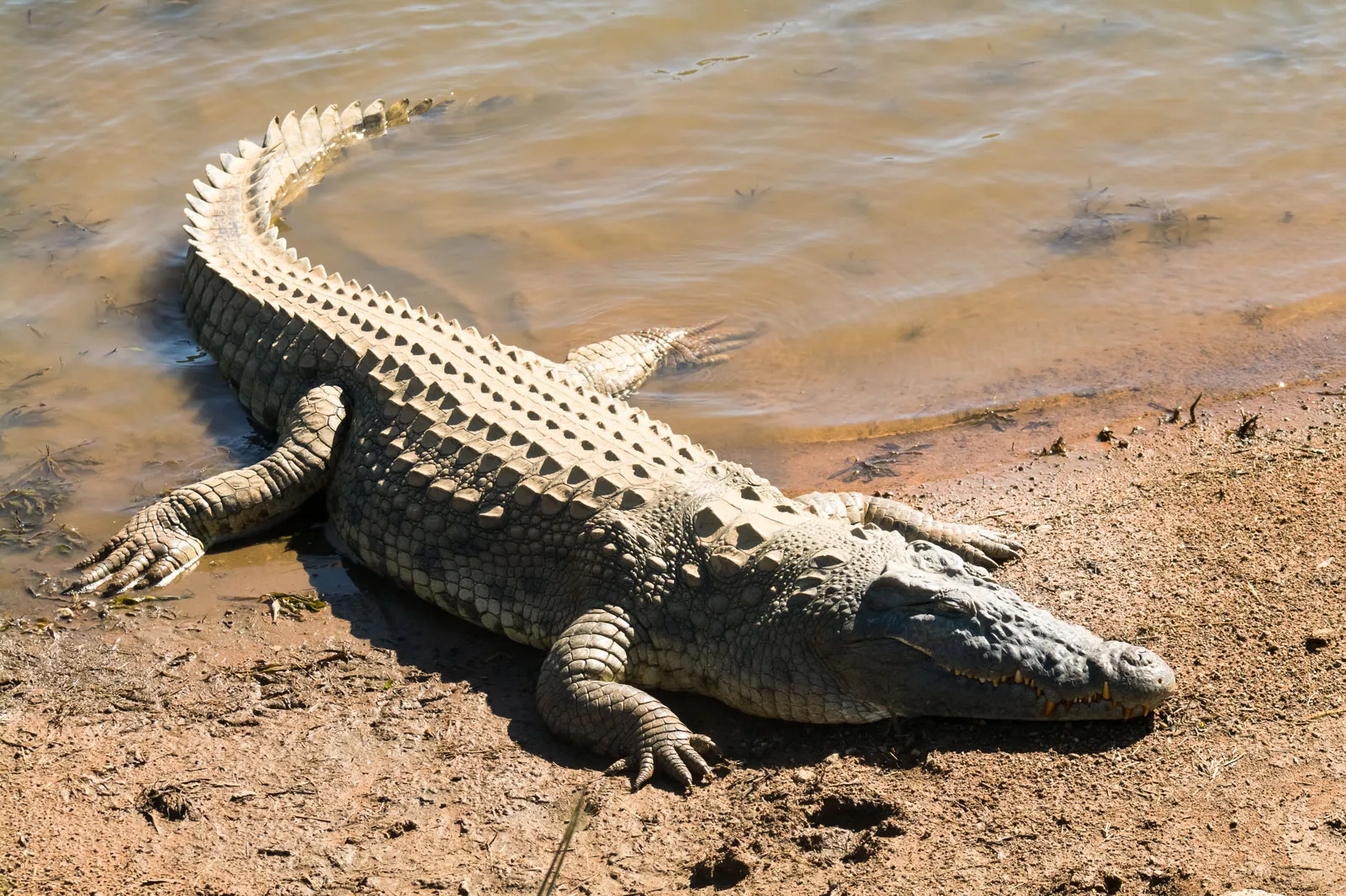Nile Crocodile Conservation Status
Nile Crocodile Conservation Status The Nile crocodile (Crocodylus niloticus) is one of the most iconic species of Africa, known for its immense size and strength, and as one of the largest freshwater predators in the world. Found throughout sub-Saharan Africa, this ancient reptile plays a critical role as an apex predator, maintaining the balance of ecosystems. However, the conservation status of the Nile crocodile is a complex issue, shaped by both its resilience and the many challenges it faces. This article explores the current status of the species, the threats it encounters, and the conservation efforts that are underway to ensure its survival.
Current Conservation Status
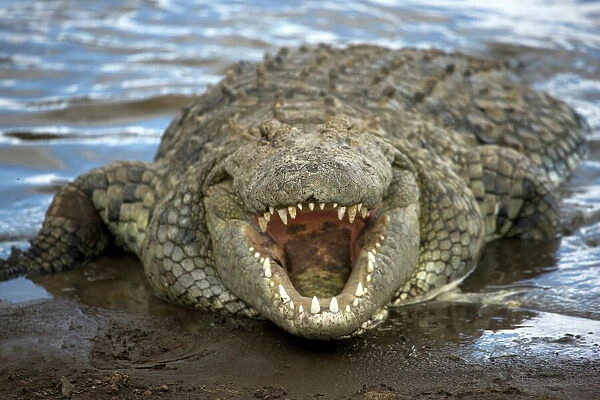
According to the International Union for Conservation of Nature (IUCN), the Nile crocodile is classified as “Least Concern” (LC) on the Red List of Threatened Species. This designation suggests that the species is not currently at immediate risk of extinction. However, despite being widespread and relatively abundant, local populations in certain regions are declining due to human activities.
Here’s a table summarizing the key points about the conservation status of the Nile crocodile:
| Category | Details |
|---|---|
| Scientific Name | Crocodylus niloticus |
| IUCN Status | Least Concern (LC) |
| CITES Classification | Appendix II (Regulated international trade) |
| Habitat | Rivers, lakes, marshlands, estuaries (Freshwater ecosystems across sub-Saharan Africa) |
| Key Threats | – Habitat destruction – Human-wildlife conflict – Illegal hunting/poaching – Climate change |
| Major Populations | Botswana, South Africa, Tanzania, Kenya, Uganda |
| Conservation Efforts | – Protected areas – Community-based conservation – Sustainable crocodile farming – International collaboration |
| Challenges | – Habitat loss – Human-crocodile conflict – Climate change impacts |
| Future Outlook | Expanding protected habitats, sustainable management, adapting to climate changes |
This table provides a concise overview of the Nile crocodile’s conservation status, threats, and ongoing efforts to protect the species.
Nile crocodiles are also listed in Appendix II of the Convention on International Trade in Endangered Species (CITES), which regulates international trade in crocodile products such as skins and meat. This ensures that trade does not threaten the survival of the species. While the global population remains stable, the “Least Concern” status should not downplay the ongoing pressures the species faces, especially in certain regions where they are heavily impacted by habitat destruction and human conflict.
Population Distribution and Habitat
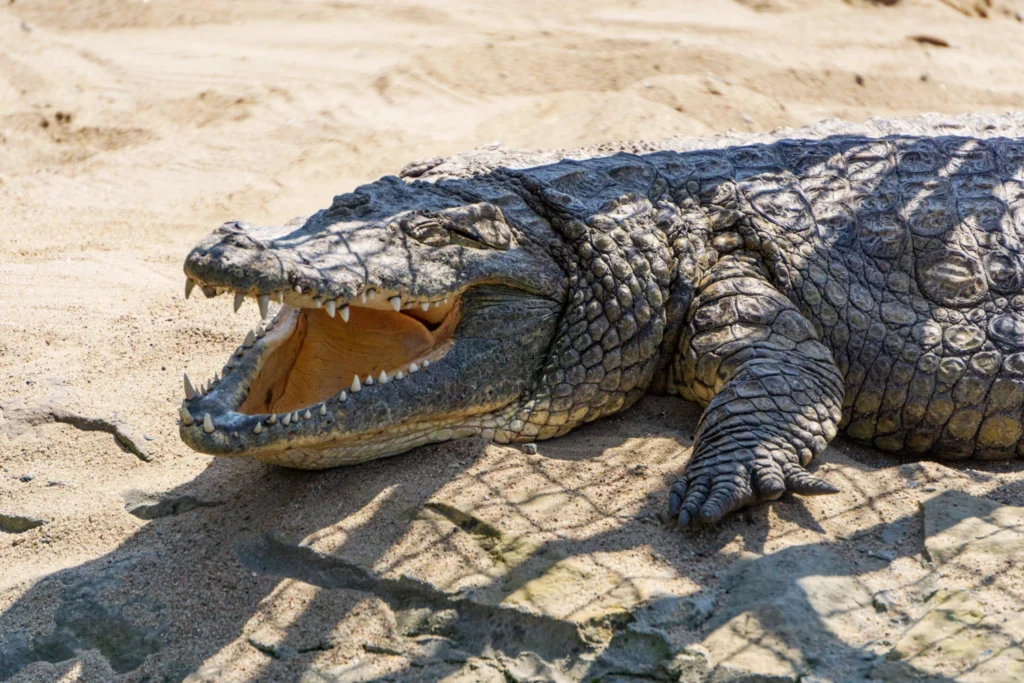
Nile crocodiles inhabit a wide range of freshwater environments, including rivers, lakes, marshlands, and estuaries. Their geographic range spans sub-Saharan Africa, from South Africa in the south to Egypt in the north, with major populations in countries such as Botswana, Kenya, Tanzania, and South Africa.
These reptiles rely on freshwater ecosystems for survival, as they need clean, slow-moving water to hunt, breed, and raise their young. Nile crocodiles are also dependent on suitable nesting sites, such as sandy riverbanks or marshy areas where females can lay their eggs. However, their habitat is increasingly being disrupted by human activity, leading to fragmentation and population isolation in many areas.
Key Threats to Nile Crocodiles
Despite their “Least Concern” status, Nile crocodiles face several significant threats:
- Habitat Destruction: Wetland drainage for agriculture, urban expansion, and the construction of dams have resulted in the loss of critical crocodile habitats. The destruction of breeding sites can prevent crocodiles from successfully reproducing, leading to local population declines.
- Human-Wildlife Conflict: Nile crocodiles are known for occasionally attacking humans and livestock, especially in areas where people live near water bodies. In retaliation, local communities often kill crocodiles, either to protect themselves or their livelihoods. This conflict is exacerbated by the shrinking availability of natural prey for the crocodiles, driving them closer to human settlements.
- Illegal Hunting and Poaching: There is a high demand for crocodile skins, which are used to make luxury leather products. While regulated hunting and farming help meet this demand, illegal poaching remains a problem in some areas. In addition to their skins, crocodiles are also hunted for their meat and body parts, which are used in traditional medicine and rituals.
- Climate Change and Environmental Changes: Shifts in water levels due to climate change, along with droughts and flooding, are affecting Nile crocodile habitats. Changes in water temperature and prey availability also threaten their ability to hunt and reproduce successfully.
Conservation Efforts and Success Stories
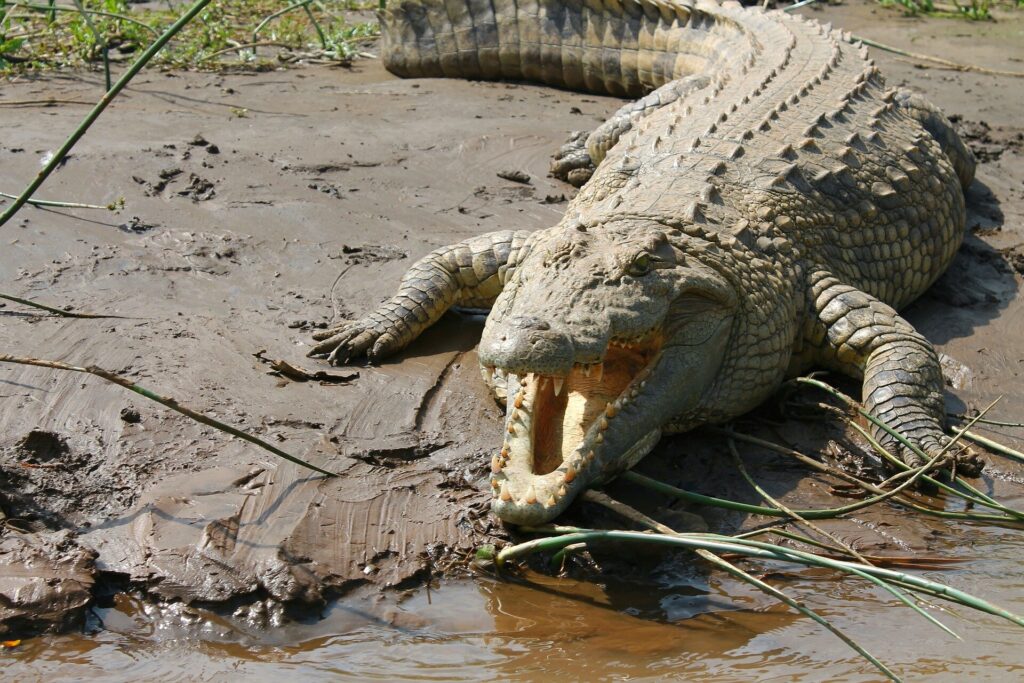
Several conservation initiatives have been implemented to address the threats facing Nile crocodiles. Some of the most notable efforts include:
- Protected Areas and Reserves: Many of Africa’s national parks and wildlife reserves provide safe havens for Nile crocodiles. Areas such as the Okavango Delta in Botswana and the St. Lucia Wetlands in South Africa offer ideal habitats where crocodile populations can thrive without significant human interference.
- Community-Based Conservation: In many parts of Africa, local communities are becoming involved in crocodile conservation efforts. Through education programs and awareness campaigns, people are learning about the importance of Nile crocodiles to their ecosystems and are being encouraged to adopt non-lethal methods of dealing with human-crocodile conflict. Some initiatives provide financial incentives to communities that protect wildlife, fostering positive attitudes toward crocodile conservation.
- Sustainable Crocodile Farming: Regulated crocodile farming has emerged as a conservation tool. By providing a controlled source of crocodile skins and meat, farming reduces the pressure on wild populations. Countries such as South Africa and Zimbabwe have successfully implemented sustainable crocodile farming practices, which also contribute to local economies.
- International Collaboration: International organizations like IUCN, CITES, and WWF have played key roles in facilitating cross-border conservation efforts. These organizations work with governments and local communities to enforce regulations, protect habitats, and monitor crocodile populations to ensure their long-term survival.
Future Outlook and Challenges
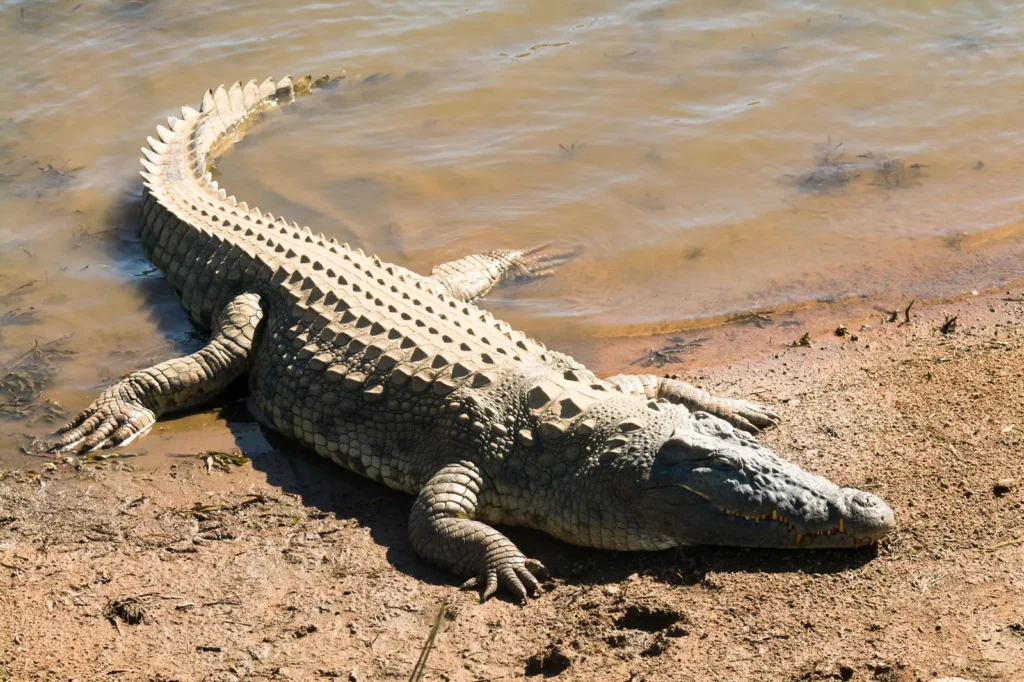
While progress has been made in conserving Nile crocodiles, there are still challenges that must be addressed. Long-term conservation goals include maintaining healthy wild populations and expanding protected areas to ensure genetic diversity and ecological stability. However, balancing human development with wildlife conservation remains a major challenge, particularly in rapidly growing regions of Africa where the demand for land and resources is high.
Emerging challenges, such as the impacts of climate change, require adaptive strategies. Conservationists need to monitor environmental changes closely and adjust their efforts accordingly to protect crocodile habitats. Research into Nile crocodile behavior, population dynamics, and threats will also be crucial for developing effective conservation strategies.
Conclusion
The Nile crocodile is a resilient species that has survived for millions of years, but modern threats pose significant risks to its future. Despite its “Least Concern” status, ongoing habitat loss, human conflict, and illegal hunting require continued conservation efforts. Protecting this apex predator is not only important for preserving biodiversity but also for maintaining the balance of freshwater ecosystems in Africa. By supporting sustainable practices, engaging local communities, and adapting to environmental changes, we can ensure that the Nile crocodile continues to thrive for generations to come.
Here are some tips for contributing to Nile crocodile conservation:
Tips for Nile Crocodile Conservation:
Support Conservation Organizations
Contribute to or volunteer with organizations focused on protecting crocodile habitats and promoting sustainable practices, such as the World Wildlife Fund (WWF) or local conservation groups in Africa.
Promote Eco-Tourism
Choose eco-friendly tourism options that support conservation efforts. Many wildlife reserves offer guided tours that focus on the protection and study of crocodiles.
Encourage Sustainable Products
Ensure that crocodile leather products are sourced from certified farms that follow CITES regulations. This helps reduce pressure on wild populations.
Raise Awareness
Educate others about the importance of Nile crocodiles in maintaining the health of ecosystems and the need to conserve their habitats.
Advocate for Habitat Protection
Support initiatives that promote the protection of wetlands, rivers, and lakes—key habitats for Nile crocodiles—by engaging in policy discussions or backing local environmental campaigns.
Practice Responsible Fishing
If you live or travel near crocodile habitats, practice sustainable fishing techniques and respect wildlife by avoiding areas where crocodiles nest or hunt.
Promote Coexistence
Advocate for non-lethal methods to mitigate human-crocodile conflict, such as improved livestock protection and education programs to reduce fear and retaliatory killings.
Frequently Asked Questions
What is the conservation status of the Nile crocodile?
The Nile crocodile is listed as “Least Concern” on the IUCN Red List, meaning its population is currently stable. However, local populations in some areas are declining due to habitat loss, human conflict, and poaching.
Why are Nile crocodiles important to the ecosystem?
Nile crocodiles play a vital role as apex predators, helping to control fish populations and remove weak or sick animals from the ecosystem. This maintains the health and balance of aquatic ecosystems.
What are the main threats to Nile crocodiles?
The primary threats include habitat destruction, human-wildlife conflict, illegal hunting for skins and meat, and environmental changes due to climate change.
Where can Nile crocodiles be found?
Nile crocodiles are found in freshwater environments such as rivers, lakes, and marshlands across sub-Saharan Africa. Countries with significant populations include Botswana, South Africa, Kenya, Tanzania, and Uganda.
How does human-crocodile conflict arise, and what can be done about it?
Conflict often arises when crocodiles attack humans or livestock near water bodies. To mitigate this, communities are being educated about safe practices near crocodile habitats, and non-lethal deterrents are being promoted to prevent retaliatory killings.
How does crocodile farming help conservation?
Sustainable crocodile farming reduces the demand for illegally hunted crocodiles by providing a legal, regulated source of crocodile skins and products. It also provides economic incentives for local communities, reducing the need for poaching.
What organizations are involved in Nile crocodile conservation?
International organizations like the IUCN, CITES, and WWF, along with local conservation groups and governments, are involved in protecting Nile crocodile populations through research, regulation, and habitat protection.
What can I do to help conserve Nile crocodiles?
You can support conservation efforts by donating to relevant organizations, promoting eco-friendly tourism, choosing sustainably sourced crocodile products, and raising awareness about the importance of Nile crocodiles to ecosystems.
How is climate change affecting Nile crocodiles?
Climate change can alter water levels, disrupt nesting sites, and affect the availability of prey. These changes pose a long-term risk to crocodile populations as they rely on stable freshwater environments to survive and reproduce.
Are there protected areas for Nile crocodiles?
Yes, several national parks and reserves across Africa serve as important habitats for Nile crocodiles, including the Okavango Delta in Botswana and the St. Lucia Wetlands in South Africa, where conservation efforts are actively maintained.https://crocogen.blog/
